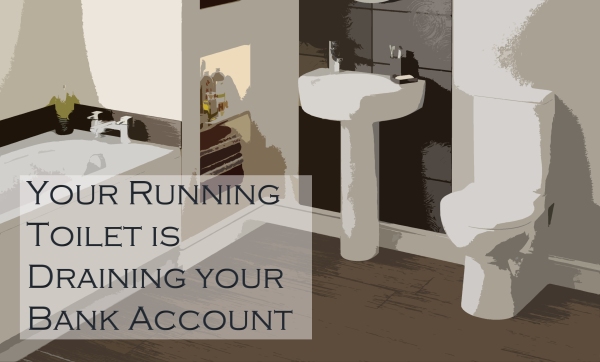How to Stop a Running Toilet from Draining Your Bank Account
The reason any toilet will run time after time is constantly because of the flush valves inside the toilet tank. There are two principle reasons why one of these valves may make the toilet run. We will talk about the flapper valve first.

A Running Toilet: Toilet Tank Flapper Valve
At the point when a toilet is flushed, there will be a valve called a flapper that opens up to give new water access to the toilet bowl. In the meantime, the crisp water pushes out the waste dilute the toilet depletes. You will perceive this flapper by looking at the base of the toilet tank where there is an opening secured by an essential rubber toilet flapper.
This fold will be connected to either a chain or a bar or some likeness thereof. After some time these flappers toilet separate and lose a decent seal between the toilet tank and bowl. Water will spill into the bowl, and the toilet should always hurry to refill the water misfortune in the tank.
To see whether this is the situation, mostly push down on the flapper to check whether the toilet quits running. If it stops running, you should simply supplant the flapper. Flappers will run in a wide range of sorts so remove the old one and convey it with you to the store. There ought to be widespread flappers that will fit most toilets on the off chance that you can't locate a correct match.
Running Toilet: Toilet Fill Valve
The crisp water is put away in the toilet tank, and when you pull the flush handle, you are opening the valve that gives the new water access to the bowl. At the point when new water leaves the toilet tank, it must be supplanted. Inside the toilet tank will be a fill valve that has a buoy appended to it. This buoy is intended to close the fill valve at an assigned moment that the toilet tank is full.
The buoy might be a vast plastic ball or a little chamber formed plastic ball that rides all over a plastic tube. Under typical working conditions a buoy will ride on the surface of the water, and when the water level achieves the perfect tallness in the tank, the buoy which is connected to the fill valve will close the water off.
On the off chance that the buoy is stuck and not skimming openly on the water then it can't close the fill valve and the toilet will keep on running. Another issue with the buoy might be if it is out of alteration. On a ball drift, you will see it is joined to the fill valve using a metal pole or customizable plastic bar.
You can attempt to confirm this bar so that the buoy will completely close the fill valve when it achieves the highest point of the toilet tank.
On the off chance that you have a metal bar on the buoy you can just twist the bar down making the buoy put more weight on the fill valve as it rises upward. On the off chance that the buoy is free and the toilet is as yet running then there should have a defective fill valve. The most straightforward approach to repair a fill valve is added up to substitution.
This does not sound as hard as it truly may be. If you have the correct devices and take after the guidelines on the new fill valve, it ought to just take around 30 minutes to supplant. You can buy another buoy valve pack at most handyman shops for under $20.
Since you have settled the running toilet issue, it will be simpler to rest during the evening without that irritating sound of the water charge soaring.